Which tile trim is best for edging? – Schluter or Bullnose
The struggle of choosing the right tile trims, and the choice between Schluter Vs Bullnose can be quite confusing and time-consuming.
Schluter and Bullnose, both are quite popular tile trims and each of them comes with its own set of advantages and disadvantages.
While schluter tile trim is quite popular and gives modern charm to whole edging, on the other hand bullnose is more affordable than schluter.
In such conditions where both trims offer numerous benefits, it can be little hard to choose the right edging profile.
If you are stuck wondering which tile trim will give you that perfect finish, don’t worry, this post is for you.
In this post, we will walk you through the key differences between Schluter and Bullnose tile trims. The post discusses the trendline between bullnose tile trim and schluter. Further, we will see the purpose, cost, and types of each trim.
By end of this post, you should have enough understanding on which which tile edge trim to use.
Table of Contents
ToggleWhat is Schluter? – An Overview
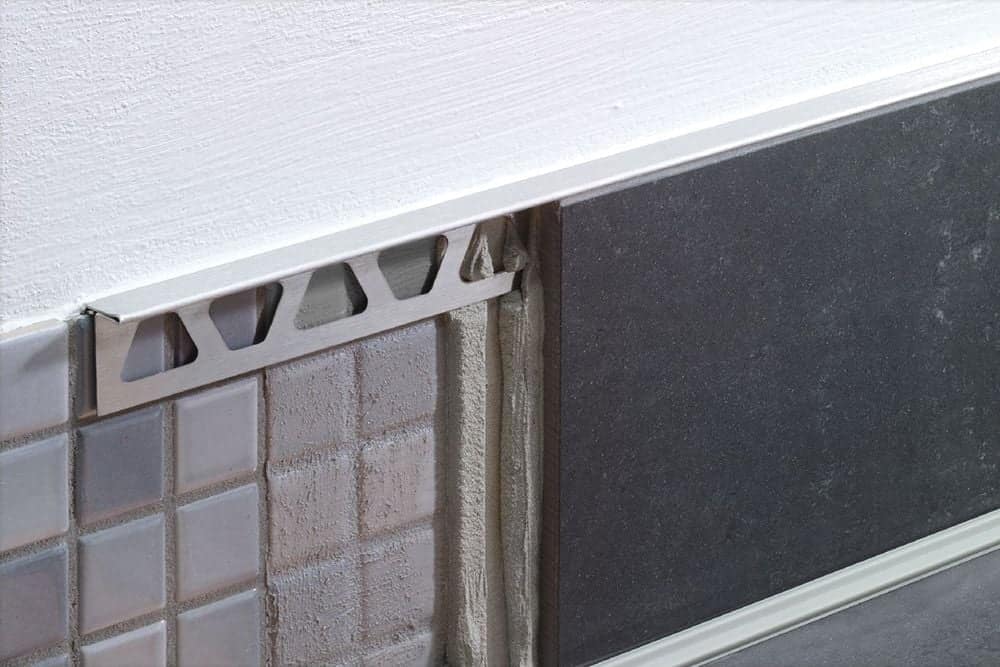
Schluter tile trim is basically a tile edge protection profile, generally built with meta(such as aluminum, stainless steel) or PVC. These tile trims are designed to protect the border or edging between the tiles. It’s especially popular in modern designs for giving a modern and sleek look to tile edging.
As for the Schluter installation, it is done during tile installation as it protects the tile edges from damage and helps create a waterproof barrier.
It’s placed at the edges before tiles are installed, this ensures a seamless look that lasts for a long time. It’s ideal for high-moisture areas like kitchens and bathrooms.
Let’s learn more about schluter below:
When should you use schluter?
Those who like a minimal and modern look, Schluter tile trims is a great option as it provide clean and sleek lines in your space. It’s also a great choice if you are thinking of installing them in high-moisture areas such as kitchens and bathrooms.
Overall, if you want a sleek, modern look and durable finish for high-traffic and moistured areas, Schluter edging is a great option.
Types of Schluter
Schluter offers a wide variety of tile edge trims which serves a specific purpose while enhancing the overall aesthetic of your tile border.
The most common Schluter strips are Schluter Jolly, Schluter Rondec, Schluter Quadec, Schluter Dilex, and Schluter Schiene.
Let’s learn more about each of them:
Schluter Jolly:
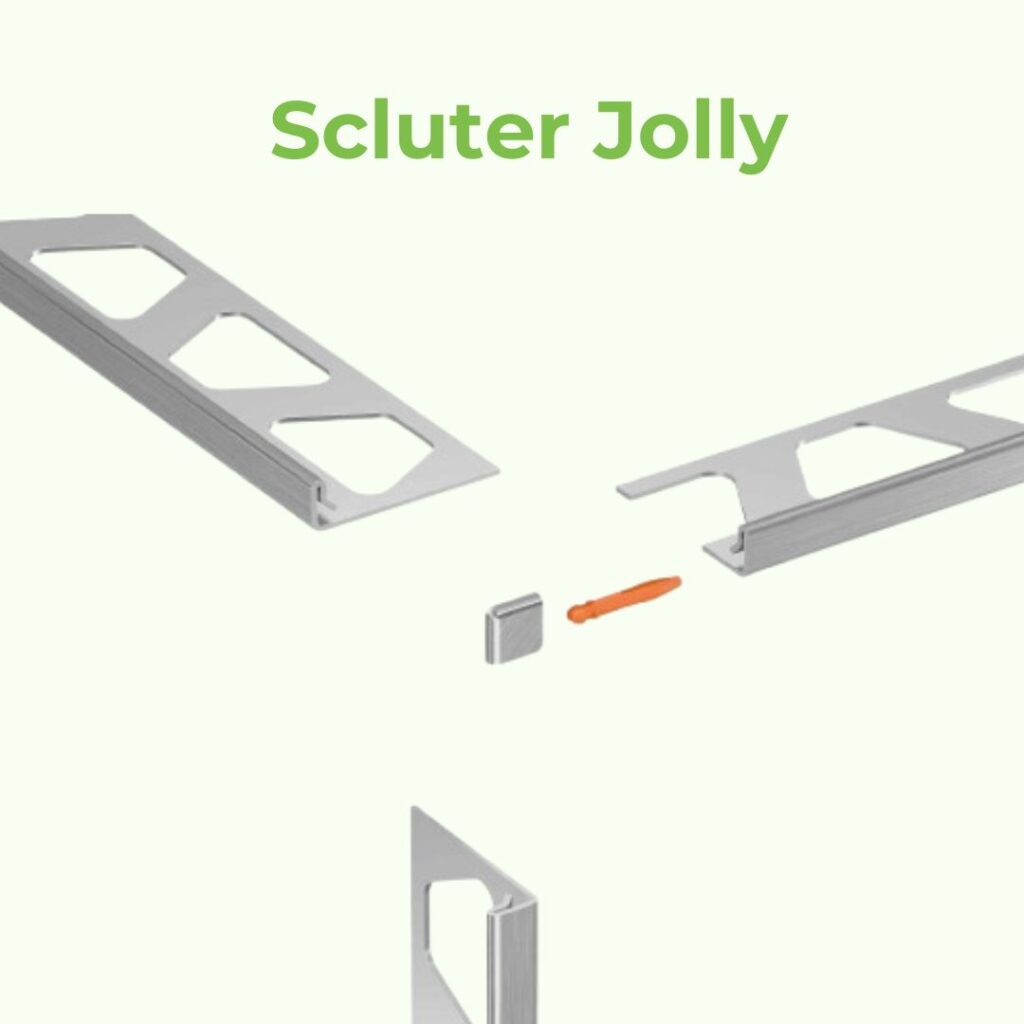
This is a straight-edged trim, ideal for protecting the sharp edges of tiles. It’s often used on wall corners, creating soft rounded corners. Jolly schluter usually costs between $5 to $10 per piece. These tile trims are available in metal and PVC materials, to match your tile finishes.
Schluter Rondec:
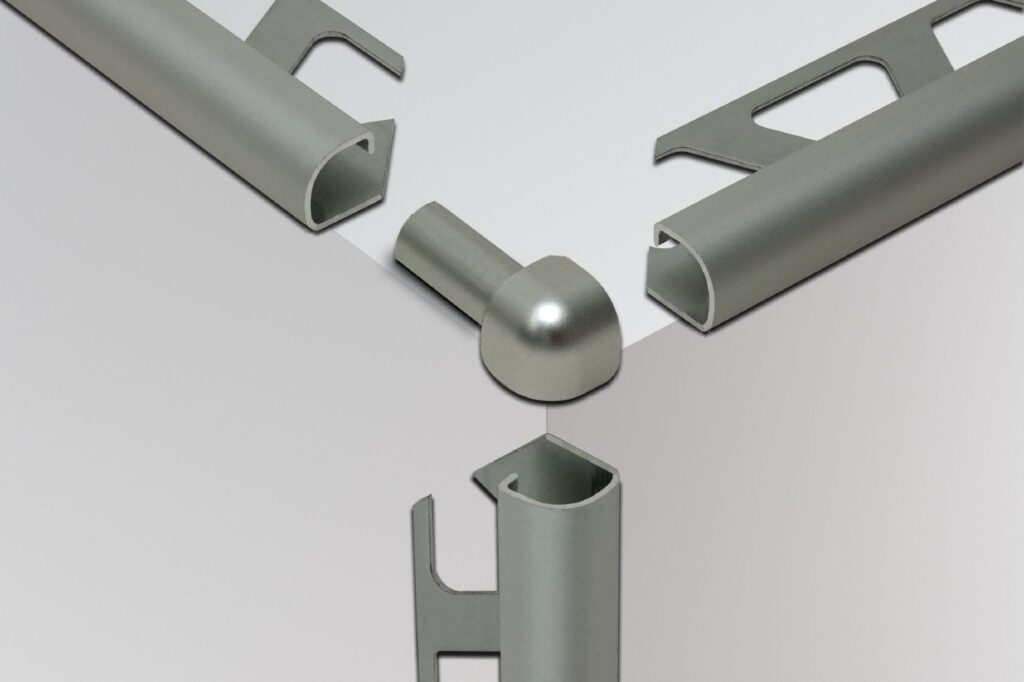
It has rounded edges trims, which are perfect for creating softer transitions between walls and tiles. It’s ideal if you are going for a traditional and sophisticated look. This curved design is great for both walls and floors. Their price typically ranges from $10 to $20 depending on the material and design you want.
Schluter Schiene:
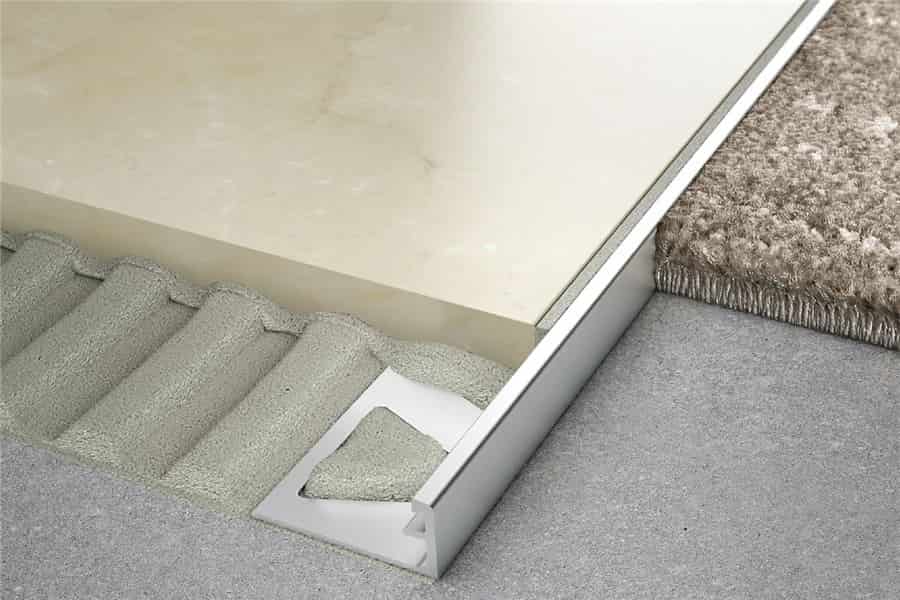
This is designed to protect the edges of the tiled surfaces while maintaining a seamless flow between different types of flooring. It’s mostly used in high-traffic areas like entryways or where tiles usually meet carpet or other flooring materials. Its cost is usually around $7 to $15 per piece.
Schluter Quadec:
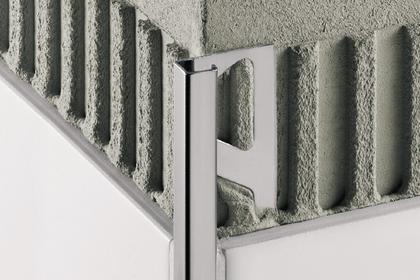
It has square-shaped edges, providing a more bold and contemporary look. For those people who want sleek and clean lines in their designs can go for this tile trim. Its price usually ranges from $20 to $50 per piece.
Schluter Dilex:
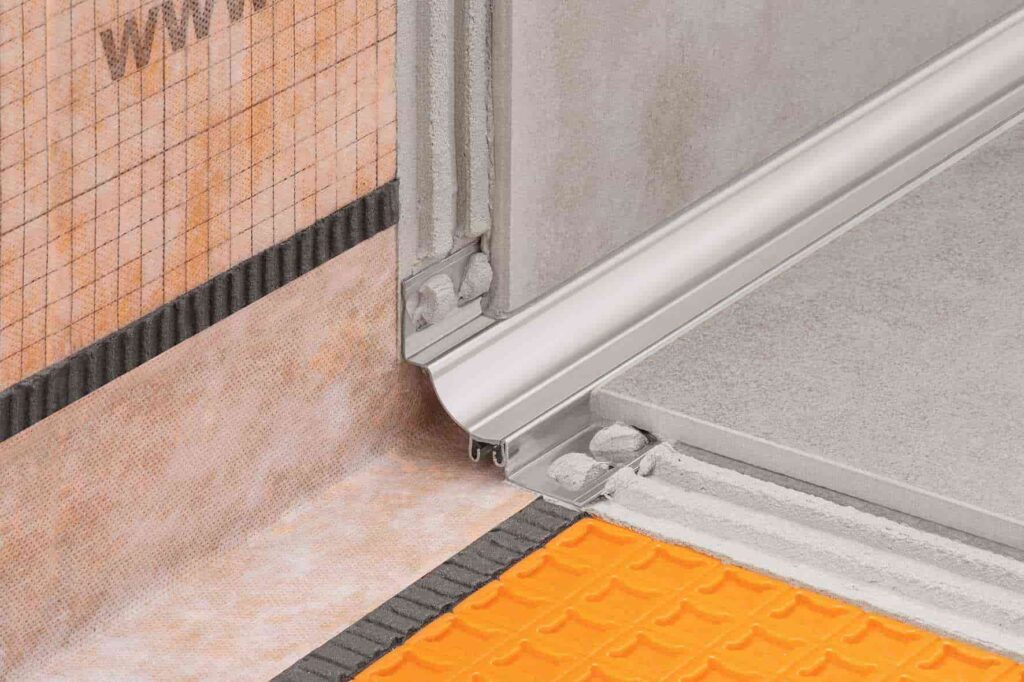
It is designed for expansion joints and areas with movement, allowing flexibility without cracking. It’s mostly used in places where heavy loads are expected while protecting the tiles. These tiles are great for commercial and industrial spaces. Its cost is usually around $10 to $25 per piece, depending on the style and material.
How much does it cost to install schluter?
When it comes to the installation cost of Schluter, it vary based on factors like the type of Schluter, the size of the project, and whether you are hiring a professional for installation or going for the DIY approach.
If you are planning to DIY, you may need some specific tools like tile spacers, and notched towels, which will add around $20 to $50 to the costs. After doing some maths and rough calculation, for a small project, the cost of Schluter installation will be $50 to $150 – including the tools and the materials.
As for those who want to hire a professional to have a hassle-free and flawless installation then the labor cost would range from $50 to $100 per hour. Also, the cost may differ depending on the complexity of the project, location, or some special work around corners and designs. In such case, the cost of installing schluter strips would be around $300 to $1,000.
What is Bullnose? – An Overview
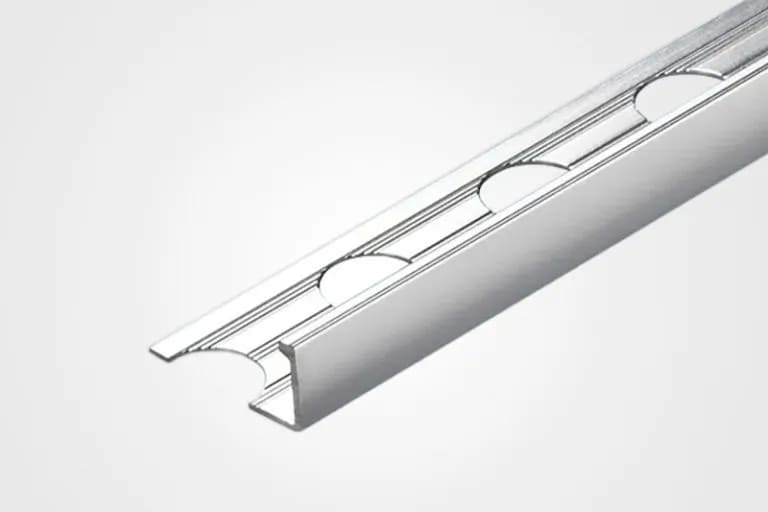
Bullnose tile trims are designed to have round, smooth edges, that create a traditional and soft look. Schluter strips tend to have metallic structure while Bullnose tile trims are more like ceramic structure that has a smooth, curved finish that creates a smooth transition between the tiled surface and the surrounding area.
Bullnose strips are often used on countertops, backsplashes, shower walls, and staircases, to create that soft, polished look.
Let’s learn more about bullnose tile stripes:
When to use bullnose strips?
Bullnose are specially shaped round-edged tile trims and are used to create a smooth and softer look on the edge of the tiled surfaces.
This round feature serves both a practical and aesthetic function as it creates a seamless transition between tile surfaces and surrounding areas while also providing protection from sharp tile edges.
These bullnose tile trims are used to protect the exposed tile edges and keep them from getting chipped or damaged.
You can use bullnose to give a finishing touch to the edges, such as the shower walls, kitchen backsplashes, countertop edges, and staircase.
These tile trims are ideal for creating a smooth transition between tiled surface and the surrounding surfaces. You can use these tiles to create a more cohesive and softer look.
Types of Bullnose
Bullnose tile trims can be found in different shapes and designs, each of them designed to suit a specific purpose and has its own aesthetic charm.
The most common Bullnose tile trims are Standard Bullnose, Double Bullnose, Half Bullnose, Corner Bullnose, and Radius Bullnose.
Let’s have a quick overview of these Bullnose tile trims.
Standard Bullnose:
Ir is the most common type of Bullnose tile trim with a rounded edge on one side. It’s typically used for finishing the edges of walls, backsplash, and countertops. It’s used to create a clean, finished, and polished look on the tiled surface. It usually costs around $5 to $15 per linear foot.
Double Bullnose:
It is different as it has two rounded edges instead of one. It is used for creating smooth edges on both sides of the tile, such as countertops, stairs, or places where two tiled surfaces need finishing. It will cost you around $10 to $20 per linear foot.
Half Bullnose:
Half bullnose tile has less rounded edges in comparison to standard Bullnose. It offers a softer transition between the tile and the surrounding surface but with a more subtle curve. It costs usually around $8 to $20 per linear foot, depending on the type of material.
Corner Bullnose:
Corner bullnose tiles are specifically for 90-degree angles, which gives you two rounded edges on perpendicular sides. Most commonly used to create smooth and seamless transitions around the corners. It will cost you around $5 to $15 per linear foot.
Radius Bullnose:
These tile has more curved edges and can be used for circular or curved installations. It is an ideal option for finishing curved surfaces like rounded staircases, around pools, or other areas with curves. It will cost you around $8 to $20 per linear foot, depending on the material.
How much does it cost to install bullnose?
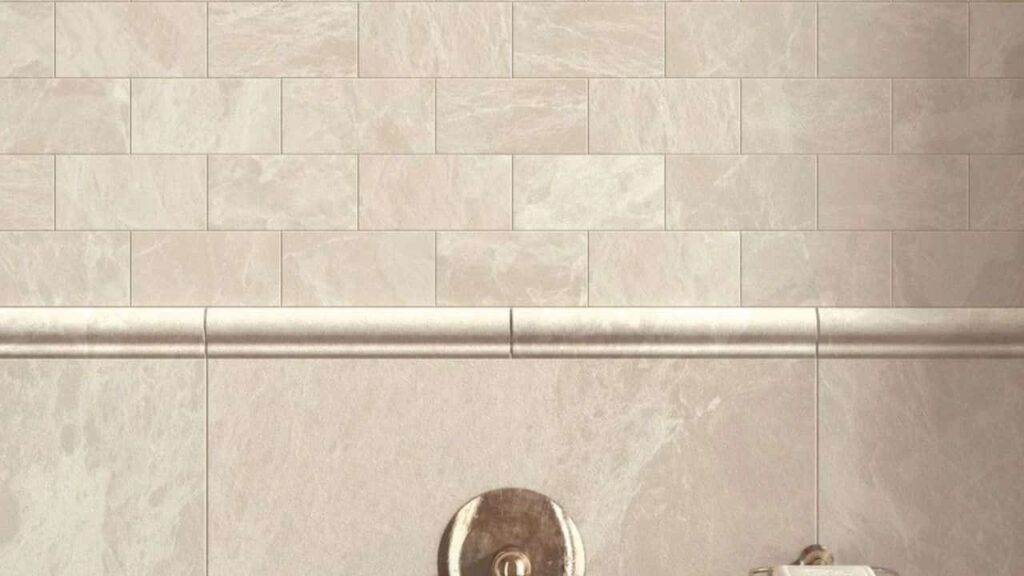
Bullnose tiles are typically installed at the final stage of the tiling process. They can be installed in places like shower walls, backsplashes, countertops, staircases, or along the corners.
By installing Bullnose tile, you can ensure a seamless transition between the tile surfaces and walls while also keeping those edges safe.
As for the cost of installation, it also depends on whether you want to hire a professional or go for the DIY method.
For the DIY installation, you will need basic tools like spacers, cutters, and adhesives, which will cost you around $30 to $100 for your budget. But if you hire a professional then it would cost you around $40 to $80 per hour.
The total cost might be different depending on the complexity of the project, how many tiles need to be installed, labor prices in your area, and some other detailing work.
For a standard project, you can expect to pay around $300 to $600 while including both material and labor.
Schluter Vs Bullnose: All Key Difference
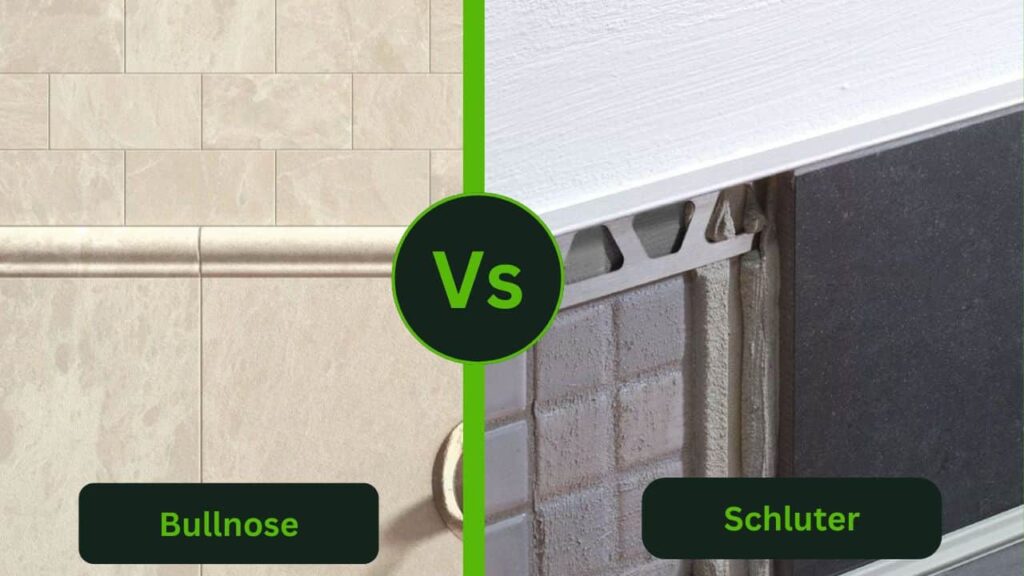
When it comes to giving the finishing touches to the tile edges, both Schluter and Bullnose have similar roles, both are charming in their own way.
However, there are some key differences in design, structures, installation, durability, protection, applications, and costs, which you have to keep in mind while choosing the one between bullnose vs schluter.
Schluter
- ✔ Made from durable materials like PVC and aluminum.
- ✘ More expensive compared to Bullnose.
- ✔ Highly durable due to its rigid structure.
- ✘ Slightly harder to install.
- ✔ Suitable for both commercial and residential applications.
Bullnose
- ✔ Made from materials like ceramic, porcelain, and natural stone.
- ✔ Lower installation cost than Schluter.
- ✘ Durable but not as tough as Schluter.
- ✔ Easy to install.
- ✘ Best suited for residential use only.
Difference in Design
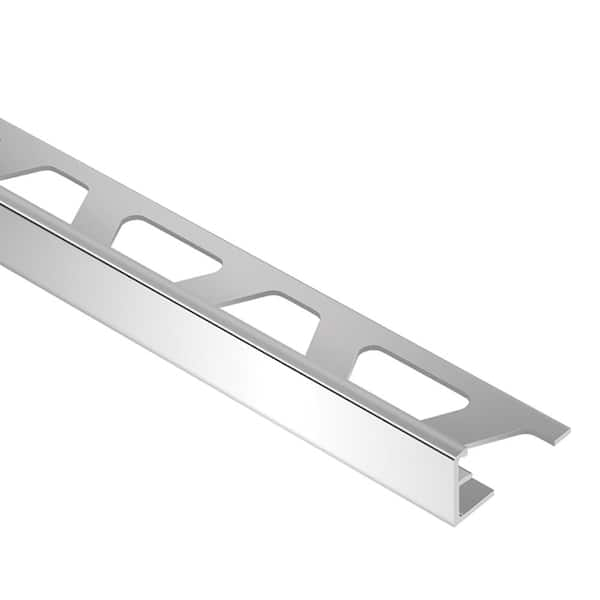
Both Schluter and Bullnose bring their own unique charm to your tiling project. Schluter tile trims are made from materials like PVC and metal, offering a sleek and modern look to your tiled edges. Schluter tile trim are designed to be visible, creating a sharp and defined look to your tile border. They are also available in various styles and colors which will suit any minimalist and simple style.
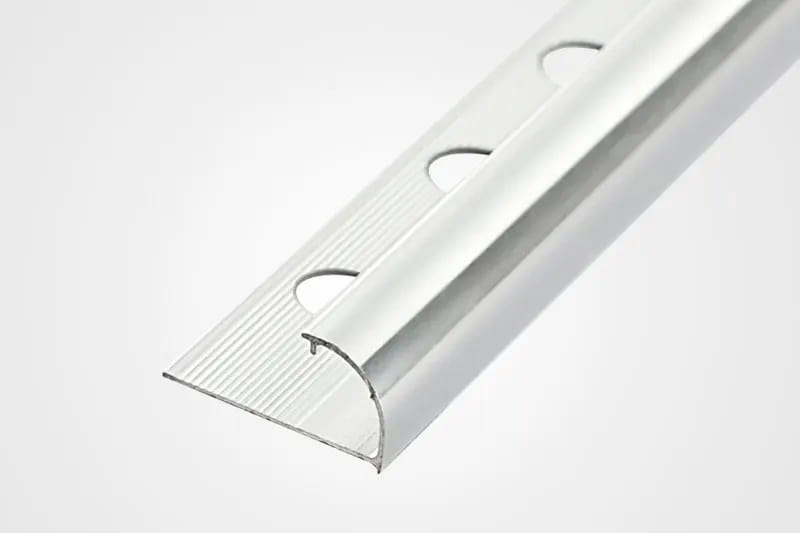
Whereas Bullnose offers a more traditional look and is made from materials like ceramic, porcelain, and natural stone. Their smooth and rounded edges provide a smooth transition between your tiles and the area around them. Moreover, the curved edges also make sure to provide protection from the sharp angles and unfinished edges. Bullnose tiles are available in various styles and colors so that they can easily match your tile’s design.
Difference in installation cost
You already have the idea that Schluter tile trims are a bit more costly in comparison to Bullnose tiles. It’s because of their cost of materials and also the specialized installation method.
The price is also different depending on the types of Schluter tile trims as each type is different and has a specific use. And if you hire a professional then the installation costs will increase as the labor costs are somewhere around $50 to $100 per hour. The cost of installation might vary depending on different areas and the complexity of the project.
Difference in Durability
Coming to the durability, schluter tile trims are more sturdy than Bullnose as they are made with metal and PVC, making them highly durable and resistant to wear and tear.
Schluter tile trim is an ideal option for traffic, areas prone to moisture, and commercial places, keep your tile edges from chipping and cracking while extending the life of your tile surface.
Meanwhile, Bullnose’s durability depends on the tile’s material. However, the problem is that they are not suitable for high-traffic areas.
Difference in installation process
The installation process for both Schluter and Bullnose depends on the type of tile trims, size, and complexity of the project. If we talk about the installation process then Bullnose installation is much simpler than the Schluter tile trims.
Schluter tile trims require more precision as they need to be measured and cut to the proper length to ensure a secure fit and seamless look.
However, Bullnose tile installation is quite easier in comparison to Schluter tile trims as they are just installed like a normal tile.
Difference in Protection Level
The level of protection offered by Schluter and Bullnose differs significantly which can also impact the protection of your tiles.
Schluter trims were designed to provide great protection that makes them ideal for high-traffic, wet environments areas like kitchens, bathrooms, or outdoor areas. This makes the Schluter tiles more effective and durable in both residential and commercial areas.
While Bullnose offers some level of protection but not as close as Schluter’s level of protection. They are more best suited for areas with less foot traffic and lower moisture.
Scope of Use
The scope of use between Schluter and Bullnose can be different depending on factors like project type, location, preferred aesthetics, and functionality.
Schluter tile trims are versatile and highly durable which makes them ideal for both residential and commercial or industrial purposes. Due to their durability and protection against moisture, they are widely used in high-traffic areas, such as hallways, entryways, or public spaces, and are perfect for moisture-prone environments like bathrooms, shower spaces, and kitchens.
However, Bullnose tiles are more about aesthetics and are mostly used in residential places. These bullnose tiles are perfect for creating a smooth, finished edge on the countertops, backsplashes, and along the walls. It’s a great choice if you want your tile edges to blend seamlessly with the tiled surface. While it provides a clean and traditional look, it is preferred to use the Bullnose tiles in less-traffic areas.
Conclusion
Schluter vs Bullnose, both are great options for those who are looking for highly durable and resistant to tear and wear under foot traffic.
However, there are some significant differences between schluter strips and bullnose based on installation process, cost, designs, style, and durability.
Schluter tile trims are considered stylish, minimalist, and modern whereas Bullnose gives off a more rustic, rugged, and natural look.
Schluter is a bit costly in comparison to Bullnose because of its good quality material, whereas Bullnose is not much different when it comes to its installation cost.
In the end, it all comes down to your personal preferences.
Choose the options that best align with your requirements and aesthetic preferences.
Schluter Vs Bullnose: All Key Differences With Images(2025 Updated)
